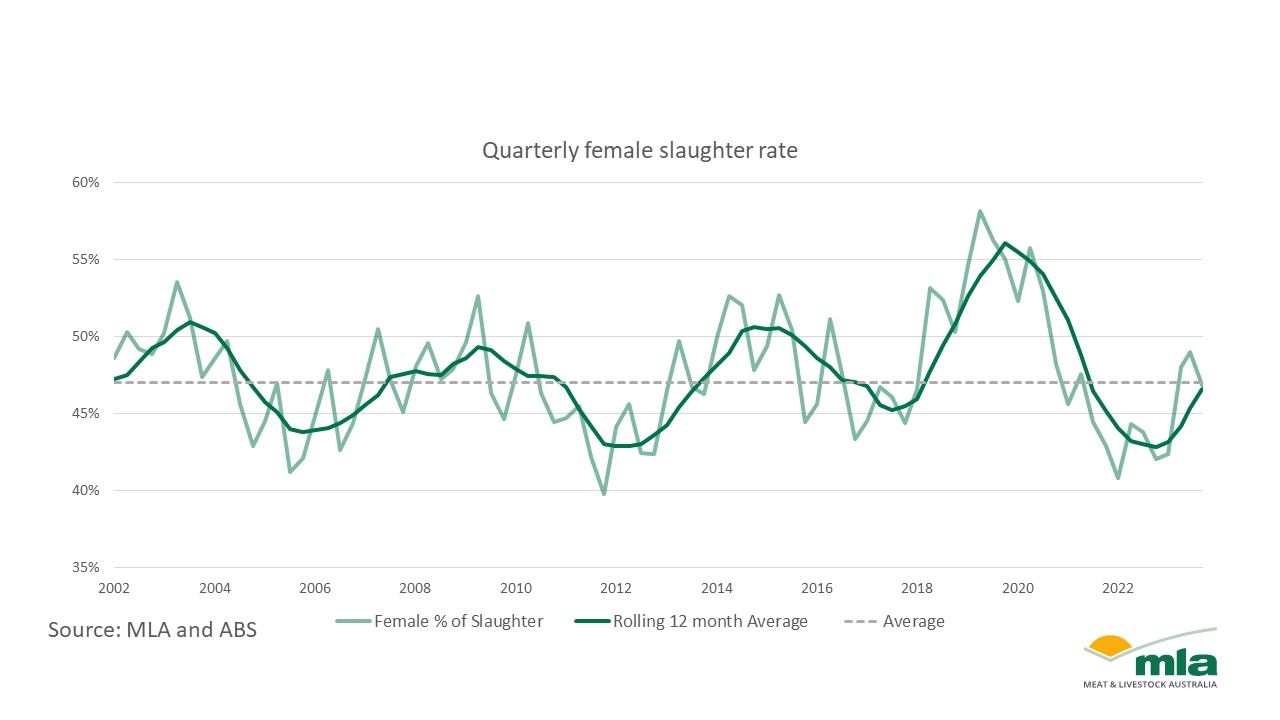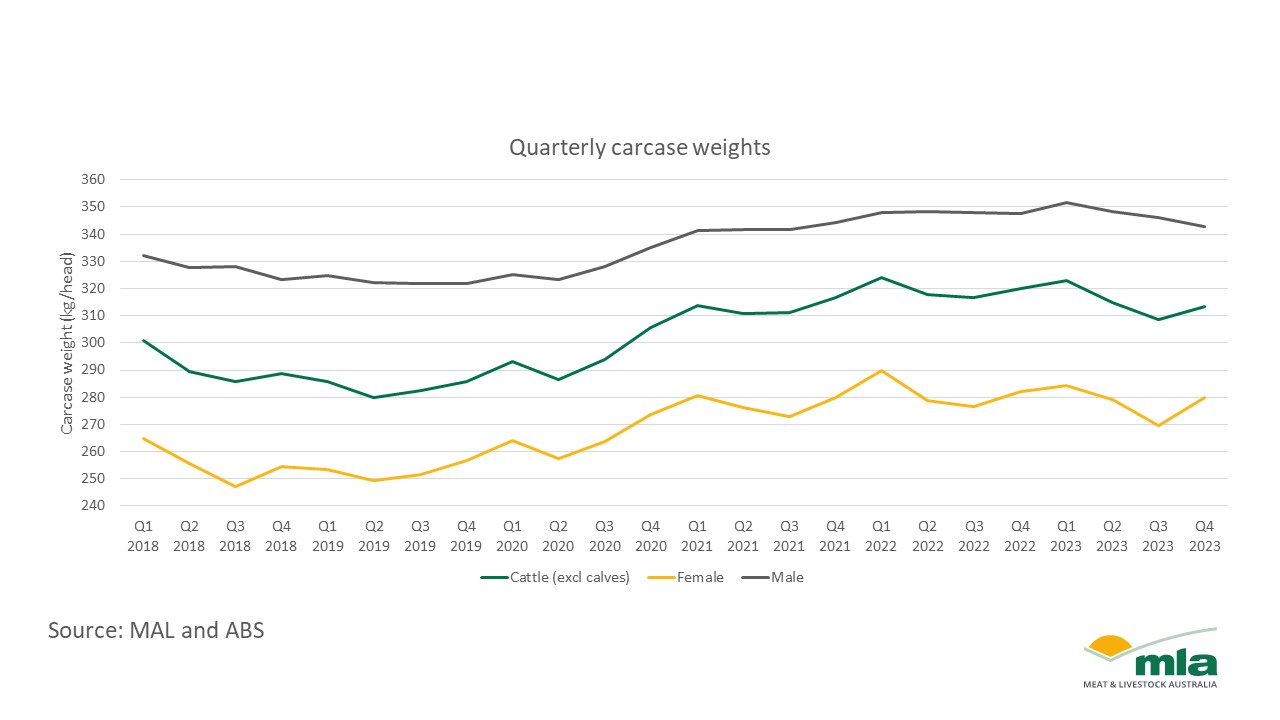How female cattle slaughter rates impact carcase weights
Key points
- Carcase weights of female and male cattle reacted differently in 2023 due to decision-making priorities of producers in a non-drought year.
- 2023 quarterly female slaughter rates were volatile.
- By Q4 of 2023, the female slaughter remate returned to long term female slaughter averages reinforcing a maintenance period.
Carcase weight movements between male and female cattle over 2023 varied significantly, primarily influenced by producers’ decision-making priorities in a non-drought year.
There is a strong correlation between carcase weights, seasonal conditions, production and slaughter. Favourable seasons, characterised by high rainfall and improved soil moisture create optimal fattening conditions, leading to increased stock retention and a focus on adding weight to cattle. This, in turn, can elevate prices due to supply-demand dynamics, particularly for fatter cattle, further incentivising producers to put weight on stock, and retain the breeding herd.
However, in 2023, the situation reversed. Forecasts of a dry season early in the year, coupled with low spring rainfall, prompted producers to shift their focus towards productivity and turning off female breeding stock.
Female slaughter rates (FSR) experienced volatility throughout the year. In the first quarter, FSR remained low at 42.4%, alongside historically high female carcase weights of 284kg/head, reflecting a continuation of the 2022 rebuild. Forecasts and low rainfall in Q2 led to a turn-off of unproductive and older breeding stock, resulting in a jump in FSR to 48%. This led to a 12% increase in total slaughter, primarily driven by a 27% lift in female slaughter, resulting in a decrease in carcase weights to 279kg/head.

The trend of high female slaughter persisted into Q3, with FSR increasing to 49%. Female slaughter and production lifted by 12% and 9% respectively, while carcase weights decreased again to 269kg/head.
The big lift to the FSR mid-year was unique in terms of the different reactions between the male and female herd. Male cattle slaughter, production and carcase weights displayed much less volatility throughout 2023, indicating decisions were not solely driven by drought, but rather focused on preparedness and maintenance. Producers had sufficient feed but directed it towards fattening steers and bullocks rather than breeding.
By Q4 of 2023, the slaughter-production relationship returned to a more maintenance-oriented nature. Both female and male cattle slaughter decreased, although female slaughter declined significantly faster, resulting in an FSR of 46.9%, just below the long-term average of 47%.

Looking at carcase weights at the end of 2023, cattle carcase weights (excluding calves) increased by 2% in the last quarter to 313kg/head. Female carcase weights lifted by 4%, surpassing the five-year average to reach 271kg/head, largely due to the decrease in female and low-productivity turn-off as rainfall returned and prices improved. Conversely, male carcase weights decreased by less than 1% in the last quarter of the year due to a slight increase in slaughter. This underscores that reactions to carcase weights within a volatile, yet non-drought year, differ between female and male cattle.



